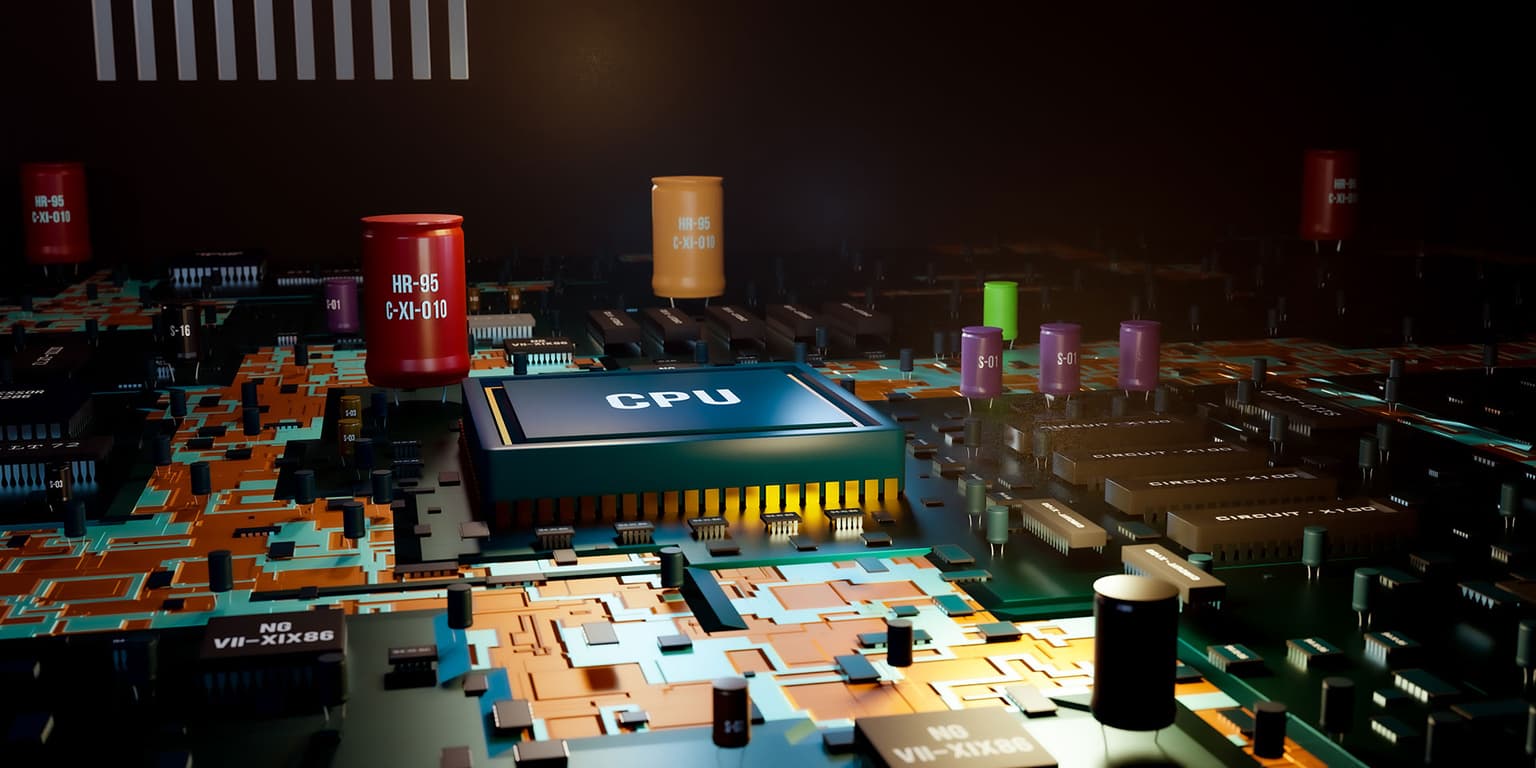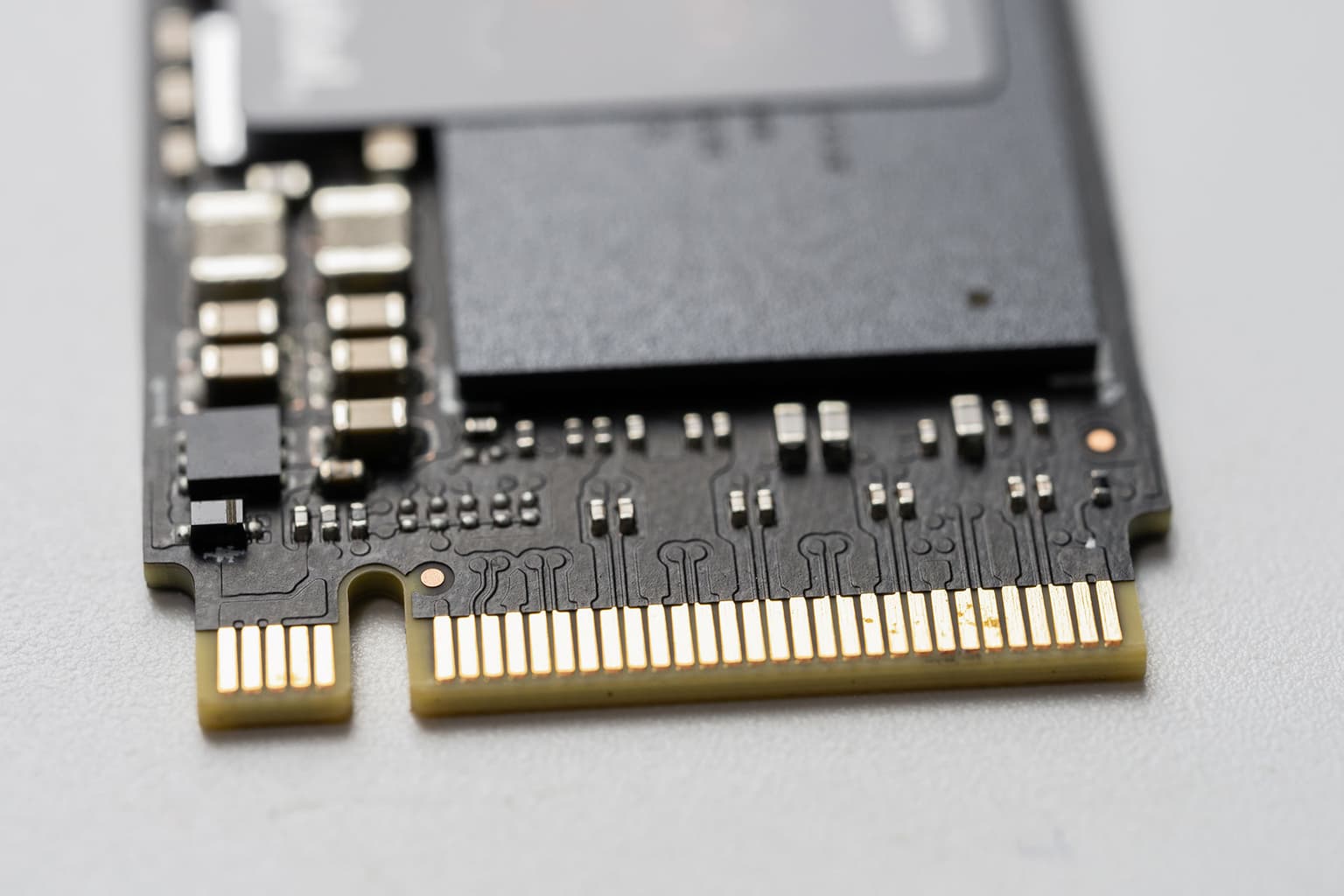Blog/
What is NVMe SSD: Everything you need to know

As technology becomes more instantaneous than ever, the need for faster data access and greater reliability keeps on growing each year. In this constantly evolving landscape, NVMe SSDs have surged in popularity—whether for gaming, video editing, or AI processing.
Hard disk drives (HDDs) and even older SSDs using SATA interfaces struggle to keep pace with what NVMe SSDs offer. Whether at the enterprise level or for individual consumers, NVMe SSDs have become the rule rather than the exception.
Summary
NVMe, which stands for Non-Volatile Memory Express, is a technology that leverages the power of PCIe interfaces to enable uninterrupted, high-speed communication between storage drives and CPUs.
By the end of this article, you’ll know everything you need about NVMe SSDs and how they can impact your hardware strategy. Your ideal setup is just a few clicks away. Sign up on Latitude.sh.
What is NVMe SSD
Even though NVMe SSDs are treated as a single entity in this text, breaking them down and then putting them back together may help you better understand what the fuss is all about.
What is NVMe
NVMe is a high-performance protocol specifically designed for SSDs and other flash-based storage devices. It offers a streamlined approach to data transfer that overcomes the limitations inherent in older protocols.
NVMe represents the evolution of AHCI (Advanced Host Controller Interface), which was originally created for the now outdated hard disk drives.
Key features of NVMe include its ability to communicate directly with the CPU via the PCIe (Peripheral Component Interconnect Express) interface—a connection used for high-speed data transfer between electronic components.
While SATA interfaces are limited to a single command queue, NVMe can handle up to 64,000 command queues, each supporting 64,000 commands. In practice, this means less latency and faster read and write speeds.
Ultimately, NVMe's direct connection through PCIe streamlines data transfer, reduces overhead processing, and creates a more efficient data flow.
This is why NVMe SSDs can effectively meet the high demands of real-time data access, whether in gaming, AI computation, or enterprise environments.
What is an SSD
Let’s get straight to the point: an SSD (Solid-State Drive) is a flash-based storage device. Simple as that.
With no mechanical limitations like the spinning disks in HDDs, SSDs are faster and more durable.
SSDs store data in flash memory, which holds electrical charges inside tiny cells. These cells come in different types, each with unique strengths and trade-offs.
For example, single-level cells (SLC) store just one bit of data per cell, making them very fast and long-lasting, but also more expensive.
Multi-level cells (MLC) can store two bits per cell, which lowers the cost while providing a good balance of speed and durability.
Finally, triple-level cells (TLC) store three bits per cell, making them the most affordable option. However, they tend to be slower and less durable compared to SLC and MLC.
These different types of cells allow users to choose an SSD that best fits their needs for speed, endurance, and budget.
For an SSD to operate efficiently, it is important to use the best protocol to ensure faster communication with the rest of the system. Hence, PCIe.
SATA vs. PCIe: What’s the Difference
SATA and PCIe are different ways to connect storage devices. These are the most common options, and one is significantly faster than the other, as you may have noticed.
SATA (Serial ATA) is an older connection type created specifically for hard drives and some older SSDs. Its maximum data transfer speed is around 600 MB/s with SATA III, the latest version available.
SATA SSDs are indeed faster than traditional hard drives, but they are not nearly as fast as newer options. Additionally, SATA is limited to one command queue with up to 32 commands, which is quite low compared to PCIe.
As a newer technology, PCIe uses multiple lanes to send data. Each lane can transfer around 1 GB/s, so you can imagine the difference in performance.
A PCIe 3.0 x4 connection can reach speeds of up to 4 GB/s, and newer versions like PCIe 4.0 and 5.0 can go even faster. Furthermore, PCIe supports multiple command queues.
In summary, while SATA can be suitable for basic storage needs, PCIe is the better choice for high-performance tasks.
In short: What is NVMe SSD
In the simplest terms, it is just an SSD that uses the NVMe protocol.
PCIe vs NVMe
There seems to be some confusion as to what is the difference between PCIe and NVMe but these are completely different things, as you might have noticed so far.
NVMe, as it should be clear by now, is a protocol developed with SSDs in mind which makes data transfer faster and more energy efficient.
PCIe is the interface between NVMe and CPU. It is through the PCIe connection that the NVMe can work so efficiently.
To put it in direct terms, PCIe is the interface and NVMe is the protocol.
Partition Types in Storage Devices

Partition types define how data is organized within storage devices, such as SSDs. Computers treat partitions as separate areas of storage drives.
The idea is to help users store all kinds of data in an orderly way, making it much easier to find and manage files.
For example, you might create one partition for your operating system, another for your software applications, and even a third for your personal documents. Each partition serves a different purpose, helping you find what you need quickly.
Partitions can also improve the efficiency of how data is stored and retrieved. By dividing the storage space intelligently, users can reduce fragmentation, which occurs when files are scattered across the drive and can slow down performance.
Additionally, having separate partitions can enhance security. Different partitions can have their own access permissions, allowing you to control who can see or edit specific files. Plus, you can back up each partition independently, adding another layer of protection.
For SSDs, choosing the right type of partition is important because it can affect how the drive manages data, which, in turn, impacts speed and reliability.
MBR vs GPT for SSD: Which to Choose
The two common partition styles you might encounter are MBR (Master Boot Record) and GPT (GUID Partition Table). Understanding these partition types will help you get the most out of your SSD and manage your data effectively.
MBR (Master Boot Record)
MBR is the traditional method for data organization on storage devices like SSDs. The structure is quite straightforward and allows for up to four main partitions on a drive.
In case you need more than four partitions, you can create an extended partition. The extended partition will hold additional logical partitions and this strategy can be useful for managing different types of data or software.
Now, of course, there is a drawback. MBR can only address drives up to 2 TB, which is not a lot. MBR is not able to use all the space in larger SSDs, which can be frustrating for anyone trying to maximize storage.
The good thing is MBR has broad compatibility with many operating systems, including older versions of Windows and Linux. This makes it a safe choice if you're using older computers or software that may not support newer partitioning methods.
GPT (GUID Partition Table)
GPT (GUID Partition Table) is the most popular and modern option for organizing storage. It offers several key advantages in relation to MBR.
While MBR can create up to four main partition types on a drive, GPT can go up to 128 partitions on Windows without the need for nested partitions, which means more flexibility in how you manage storage.
Also, there is the matter that each partition can be as large as 9.4 zettabytes, far exceeding the capacity of any SSD currently available.
(In case you're wondering, this GPT had nothing to do with the GPT in ChatGPT. )
Clearly, GPT is particularly well-suited for SSDs larger than 2 terabytes, allowing you to take full advantage of your drive's storage capacity without any limitations. This is especially important as data storage needs continue to grow.
Besides simply TBs, GPT includes backup features to protect your data by storing copies of the partition information in multiple locations. So it is not just more efficient but also objectively safer.
Overall, GPT is the ideal choice for modern computer systems, especially if you are using an NVMe SSD or if your drive exceeds 2 TB in size.
NVMe SSDs with Latitude.sh

When it comes to storage solutions, choosing the right technology can significantly impact performance and efficiency.
At Latitude.sh, we offer cutting-edge NVMe SSD options that stand out for their speed and reliability, making them the ideal choice for a range of applications.
Let's use the c3.small.x86 as a reference, this instance comes equipped with 800 GB NVMe storage and a robust 10 Gbps network connection for just $158 per month, as of today.
This configuration not only meets the demands of data-intensive tasks but also ensures rapid data access and minimal latency, allowing for seamless performance whether you're running applications, handling large databases, or engaging in real-time analytics.
For those needing even more capacity and power, consider our c3.large.x86 offering, which features 2 x 1.9 TB NVMe storage paired with 24 cores of processing power and 2 x 10 Gbps network capacity, all currently for $552 per month.
This setup is perfect for heavy workloads, providing the necessary resources to handle complex computations and multiple simultaneous users without sacrificing speed.
Our m3.large.x86 and rs4.metal.large models further demonstrate the benefits of NVMe SSDs.
With configurations of 2 x 3.8 TB NVMe storage and up to 2 x 10 Gbps network capabilities, these systems cater to high-performance demands, from web3 validation to AI workloads, ensuring your applications run smoothly and efficiently.
The m3.large.x86 model is currently priced at $1,042 per month, while the rs4.metal.large, boasting 32 cores and up to 2 x 100 Gbps networking, is available for $1,293 per month, making them exceptional investments for businesses seeking top-tier performance.
By leveraging NVMe technology, Latitude.sh empowers users to optimize their workflows and achieve exceptional results.
Our NVMe SSD options not only maximize storage capabilities but also enhance data transfer rates, paving the way for faster processing and improved user experiences.
Create a free account right now and see how Latitude.sh can greatly improve your digital infrastructure.